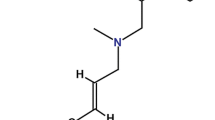Summary
The efficacy, safety, required duration of treatment, and patient preference for oral fluconazole 150 mg/week in the treatment of 521 patients with cutaneous candidosis, tinea corporis, tinea cruris or tinea pedis were assessed in an open, multicentre, noncomparative trial. Patients received weekly doses of fluconazole 150mg for an average of 4.65 weeks. Cultures were examined microscopically at baseline, at 2-week intervals, at study end, and at long term follow-up (4 to 6 weeks after the last dose). All adverse events were recorded and rated; patients with laboratory findings outside normal values were monitored. Forms regarding patient preference for oral or topical medication type were assessed from 19 centres at study end. Clinical evaluation demonstrated an overall success rate (cure plus improvement) of 96% at the end of therapy, and 92% overall success rate at long term follow-up. Eradication of pathogens based on culture was equally high, with 92% eradicated at the end of therapy and 89% eradicated at long term follow-up. Patient tolerability was good; only 7 patients (1.3%) discontinued therapy because of adverse events, in 2 cases because of laboratory abnormalities. These findings suggest that oral fluconazole therapy is safe. This study demonstrated that weekly oral doses of fluconazole 150mg were effective in the treatment of tinea corporis, tinea cruris, tinea pedis and cutaneous candidosis. Furthermore, there was a high patient preference for oral fluconazole over previous topical therapy.
Similar content being viewed by others
References
Del Aguila R, Montero-Gei F, Robles M, et al. Once-weekly oral doses of fluconazole 150mg in the treatment of tinea pedis. Clin Exp Dermatol 1992; 17: 402–6
Faergemann J. Use of fluconazole in the treatment of human fungal infections of the skin: introduction. Int J Dermatol 1992; 31Suppl. 2: 1–2
Clayton YM, Gange RW, MacDonald DM, et al. A clinical double-blind trial of topical haloprogin and miconazole against superficial fungal infections. Clin Exp Dermatol 1979; 4: 65–73
Suchil P, Montero-Gei F, Robles M, et al. Once-weekly oral doses of fluconazole 150mg in the treatment of tinea corporis/cruris and cutaneous candidiasis. Clin Exp Dermatol 1992; 17: 397–401
DeBersaques J, Bjerke JR, Borelli S, et al. Comparison of oral fluconazole and topical clotrimazole in the treatment of fungal infections of the skin: European and American experience. Int J Dermatol 1992; 31Suppl. 2: 21–6
Lewis JH, Zimmerman HJ, Benson GD, et al. Hepatic injury associated with ketoconazole therapy: analysis of 33 cases. Gastroenterology 1984; 86: 503–13
Hardin TC, Graybill JR, Fetchick R, et al. Pharmacokinetics of itraconazole following oral administration to normal volunteers. Antimicrob Agents Chemother 1988; 32: 1310–3
Grant SM, Clissold SP. Fluconazole: a review of its pharmacodynamic and pharmacokinetic properties, and therapeutic potential in superficial and systemic mycoses. Drugs 1990; 39: 877–916
Brammer KW, Farrow PR, Faulkner JK. Pharmacokinetics and tissue penetration of fluconazole in humans. Rev Infect Dis 1990; 12Suppl. 3: S318–26
DeGreef HJ, DeDoncker PR. Current therapy of dermatophytosis. J Am Acad Dermatol 1994; 31(3 pt 2): S25–30
Montero-Gei F, Perera A. Therapy with fluconazole for tinea corporis, tinea cruris, and tinea pedis. Clin Infect Dis 1992; 14Suppl. 1: S77–81
Farag A, Said A, Kaha M, Wadie N. Oral fluconazole in the treatment of tinea cruris. J Pan-Arab League Dermatol 1992; 3: 107–15
Montero-Gei F, Perera A. Once-weekly oral doses of fluconazole 150mg in the treatment of tinea corporis/cruris and cutaneous candidiasis. Clin Exp Dermatol 1992; 17: 397–401
Nada M, Said A. Efficacy and safety of single-dose oral fluconazole in the treatment of fungal skin infections. J Pan-Arab League Dermatol 1992; 2: 165–72
Montero-Gei F. Once-weekly oral doses of fluconazole 150mg in the treatment of tinea pedis. Clin Exp Dermatol 1992; 17: 402–6
Author information
Authors and Affiliations
Rights and permissions
About this article
Cite this article
Kotogyan, A., Harmanyeri, Y., Tahsin Gunes, A. et al. Efficacy and Safety of Oral Fluconazole in the Treatment of Patients with Tinea Corporis, Cruris or Pedis or Cutaneous Candidosis. Clinical Drug Investigation 12, 59–66 (1996). https://doi.org/10.2165/00044011-199612020-00001
Published:
Issue Date:
DOI: https://doi.org/10.2165/00044011-199612020-00001




